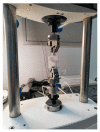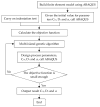An Inverse Method to Determine Mechanical Parameters of Porcine Vitreous Bodies Based on the Indentation Test
- PMID: 37370577
- PMCID: PMC10295402
- DOI: 10.3390/bioengineering10060646
An Inverse Method to Determine Mechanical Parameters of Porcine Vitreous Bodies Based on the Indentation Test
Abstract
The vitreous body keeps the lens and retina in place and protects these tissues from physical insults. Existing studies have reported that the mechanical properties of vitreous body varied after liquefaction, suggesting mechanical properties could be effective parameters to identify vitreous liquefaction process. Thus, in this work, we aimed to propose a method to determine the mechanical properties of vitreous bodies. Fresh porcine eyes were divided into three groups, including the untreated group, the 24 h liquefaction group and the 48 h liquefaction group, which was injected collagenase and then kept for 24 h or 48 h. The indentation tests were carried out on the vitreous body in its natural location while the posterior segment of the eye was fixed in the container. A finite element model of a specimen undertaking indentation was constructed to simulate the indentation test with surface tension of vitreous body considered. Using the inverse method, the mechanical parameters of the vitreous body and the surface tension coefficient were determined. For the same parameter, values were highest in the untreated group, followed by the 24 h liquefaction group and the lowest in the 48 h liquefaction group. For C10 in the neo-Hookean model, the significant differences were found between the untreated group and liquefaction groups. This work quantified vitreous body mechanical properties successfully using inverse method, which provides a new method for identifying vitreous liquefactions related studies.
Keywords: indentation test; inverse method; liquefaction; mechanical properties; vitreous body.
Conflict of interest statement
The authors declare no conflict of interest.
Figures







Similar articles
-
A simple indentation technique for identifying localized liquefaction of the vitreous body.J Biomech. 2021 Dec 2;129:110795. doi: 10.1016/j.jbiomech.2021.110795. Epub 2021 Oct 8. J Biomech. 2021. PMID: 34662756
-
Experiment of vitreous liquefaction induced by C3F8.Pak J Pharm Sci. 2017 Jan;30(1 Suppl):281-287. Pak J Pharm Sci. 2017. PMID: 28625955
-
7.1 T MRI and T2 mapping of the human and porcine vitreous body post mortem.Eur J Pharm Biopharm. 2018 Oct;131:82-91. doi: 10.1016/j.ejpb.2018.07.021. Epub 2018 Jul 25. Eur J Pharm Biopharm. 2018. PMID: 30055255
-
[Changes in vitreous structure caused by oxygen free radicals].Nippon Ganka Gakkai Zasshi. 1995 Dec;99(12):1342-60. Nippon Ganka Gakkai Zasshi. 1995. PMID: 8571854 Review. Japanese.
-
Structural macromolecules and supramolecular organisation of the vitreous gel.Prog Retin Eye Res. 2000 May;19(3):323-44. doi: 10.1016/s1350-9462(99)00016-6. Prog Retin Eye Res. 2000. PMID: 10749380 Review.
Cited by
-
Advances in Ophthalmic Engineering-Integrating Biomechanics, Tissue Engineering, and Imaging for the Future of Vision Science.Bioengineering (Basel). 2025 Apr 2;12(4):374. doi: 10.3390/bioengineering12040374. Bioengineering (Basel). 2025. PMID: 40281734 Free PMC article.
References
Grants and funding
LinkOut - more resources
Full Text Sources

